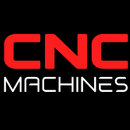Navigating Tariff Complexity in 2025: A Manufacturer’s Compliance Guide

Navigating Tariff Complexity in 2025: A Manufacturer’s Compliance Guide
In an era of rapidly shifting international trade policies, tariffs can either protect domestic industries or burden them with extra costs – and in 2025, the landscape has grown even more unpredictable. For manufacturers dependent on global supply chains, understanding these changes is crucial to minimizing financial and operational risks. Below, we’ll break down the key elements of tariff compliance and offer best practices to navigate tariff complexity with confidence.
1. Evolving Tariff Landscape in 2025
Geopolitical Shifts and Trade Agreements
- New Bilateral Deals: Some countries have renegotiated trade pacts, leading to fresh duty exemptions or sudden duty hikes.
- Retaliatory Measures: Nations that have been subjected to new tariffs often retaliate with their own, complicating exporters’ business strategies.
- Sector-Specific Duties: Industries like electronics or agricultural machinery face specialized tariffs, shifting competitive advantages overnight.
Key Takeaway: Businesses must monitor political changes and multilateral organizations for tariff news. What was once a stable import channel could pivot if tensions arise or deals expire.
2. Classifying Goods Correctly: HTS Codes in Focus
Harmonized Tariff Schedule (HTS) Codes
The Harmonized Tariff Schedule codes serve as the global lingua franca for classifying products and determining applicable duties.
- Accurate Classification: Even minor misclassification can cause underpaying or overpaying duties, inviting audits or fines.
- Updates & Revisions: Authorities often adjust codes to accommodate new technologies or define subcategories. By 2025, expanded codes for renewable energy components or AI-driven electronics might arise.
- Digital Lookups & Software: Specialized platforms can cross-reference your product specs with real-time HTS code databases, reducing manual errors.
Compliance Tip: Develop a standardized classification protocol with input from engineering, purchasing, and legal teams, ensuring that each new product line is assigned the correct HTS code from the start.
3. Essential Tools for Tariff Management
A. Automated Customs Compliance Software
- Data Synchronization: Integration with ERP systems to track cost elements like shipping, insurance, or potential re-export.
- Real-Time Duty Calculations: Tools that fetch daily updates on tariffs, ensuring quotes and invoices reflect accurate charges.
B. Trade Analytics Dashboards
- Scenario Planning: Model how a 5% or 10% tariff hike on certain materials changes your landed cost.
- Supplier Comparison: Weigh the total cost if you shift production to a different country with lower tariffs but higher labor expenses.
C. Compliance Databases
- Centralized Document Repository: Store import licenses, certificates of origin, and prior rulings in a digital vault, easily retrievable during audits.
- Reminders & Alerts: Automated notifications for duty expiration dates or newly imposed sanctions that might affect your raw materials.
Why It Matters: By automating processes and tying them into your daily workflow, your organization can make strategic decisions swiftly—avoiding penalty fees or shipping disruptions.
4. Proactive Tax Strategies for Manufacturers
Leveraging Free Trade Zones (FTZs)
- Duty Deferral: Import raw materials and assemble products inside an FTZ; only pay tariffs if the final product is released into domestic commerce.
- Re-Exports: Goods that leave the U.S. from an FTZ may not incur duties at all, enhancing global competitiveness.
Employing Drawbacks and Exemptions
- Duty Drawback: If imported materials are later exported as components, you can reclaim a portion of paid duties.
- Special Tariff Exemptions: Certain essential goods, such as medical devices or green technologies, may qualify for partial or total duty relief.
Action Tip: Consult with customs brokers or trade attorneys to identify the best structure, especially if you consistently re-export a substantial percentage of your products.
5. Mitigating Risk Through Supply Chain Diversification
Avoiding Overreliance on Single Sources
- Multiple Suppliers: Build a more flexible network of vendors, ideally spread across countries with stable or favorable tariff relationships.
- Backup Plans: Maintain small baseline contracts elsewhere so ramping up an alternative supply is easier if rates spike or sanctions occur.
Localizing or Nearshoring
- Regional Manufacturing: Setting up or sourcing from nearby countries (Canada, Mexico) can curtail long shipping routes and minimize exposure to far-reaching trade wars.
- Reshoring: In some cases, the costs of domestic production may be offset by avoiding expensive import duties and transport overhead.
Reality Check: Evaluate not just base labor costs but also intangible benefits like more control over quality, just-in-time delivery, and brand value for “Made in the USA” or local manufacturing.
6. Managing Internal Compliance Culture
Training Staff for 2025 Complexities
- Workshops & Seminars: Educate supply chain managers, finance departments, and warehouse teams on tariff updates, classification changes, and compliance best practices.
- Cross-Functional Collaboration: Encourage purchasing, engineering, and legal teams to share data proactively—catching misclassification or potential tariff exemptions early.
Avoiding Audit Pitfalls
- Detailed Record-Keeping: Maintain thorough import/export logs, vendor invoices, and official HTS code justifications.
- Voluntary Disclosures: If you discover compliance errors, proactively address them with customs authorities to reduce fines.
Outcome: A well-informed workforce drives consistent compliance, limiting exposure to penalties and sustaining strong relationships with customs officials.
Conclusion
Navigating tariff complexity in 2025 demands meticulous planning and robust compliance infrastructure. Frequent policy shifts—coupled with supply chain vulnerabilities—underscore the need for automated tools, wise sourcing decisions, and a trained workforce that can adapt in real time. By mastering HTS classification, exploring smart tax exemptions, and diversifying supplier bases, manufacturers can stay competitive despite turbulent trade conditions. A forward-thinking strategy, anchored in data-driven insights and a culture of compliance, ultimately secures your global market position—no matter how international tariff regimes may evolve.


